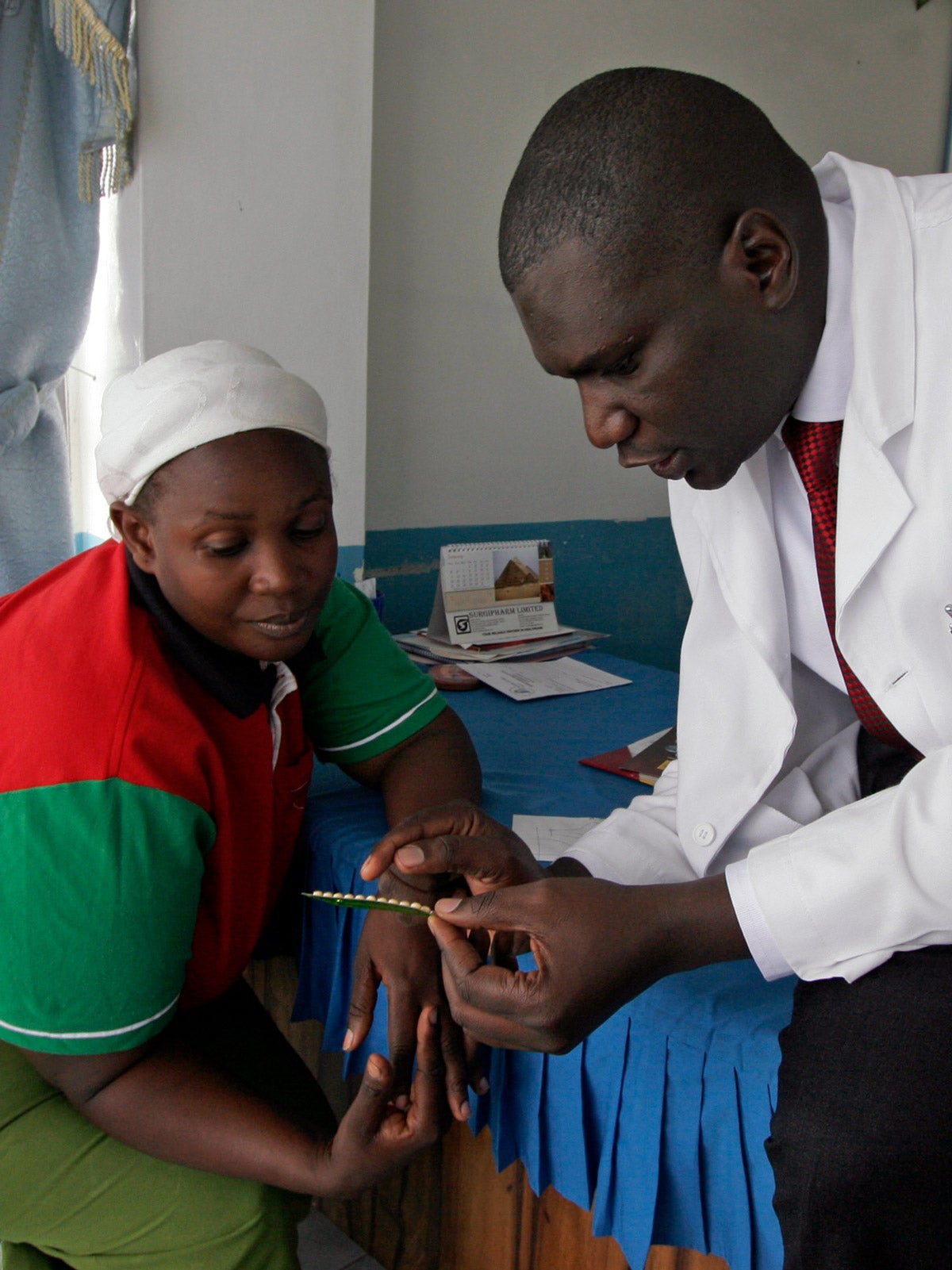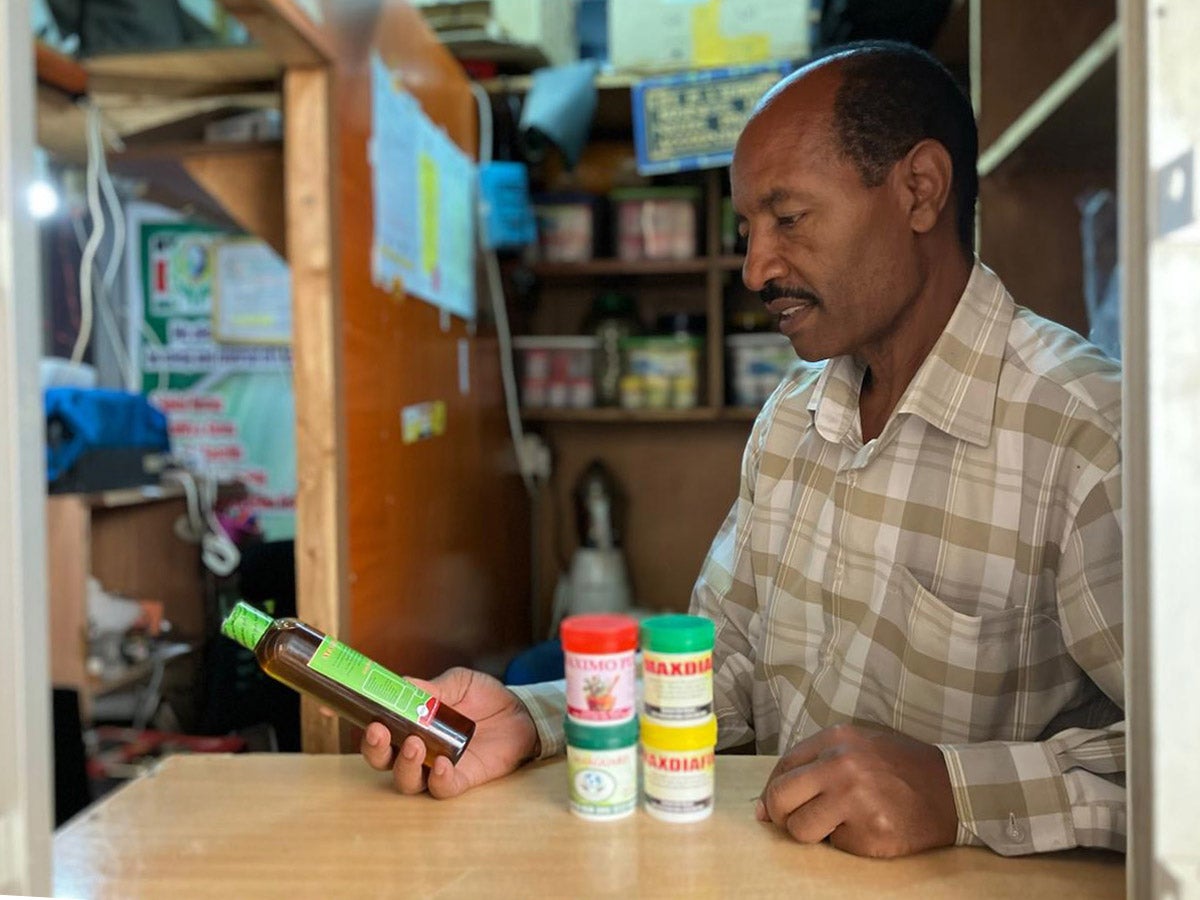
Feature
How the U.S. election has an outsized effect on global reproductive health
In Nairobi, Kenya, Cate Nyambura is awaiting the outcome of the U.S. presidential election as if it could change her life—which it might. Nyambura is the director of programs at ATHENA Network, a global feminist collective that works primarily on reproductive health and rights, HIV/AIDS, and gender-based violence. “We hold our breath when the U.S. is having elections,” Nyambura says.
Tuesday’s vote will have an enormous effect on how—and whether—Nyambura and countless other health workers and reproductive rights activists around the world can do their jobs. Thanks to a longstanding rule about abortion that shifts each time the White House changes political parties, every U.S. presidential election pits the American mood against other countries’ sovereignty—and the health of their women and girls.
Sign up for Harvard Public Health
Delivered to your inbox weekly.
Nyambura has seen what happens when U.S. interests conflict with Kenya’s own laws and standards of care. She grew up in a low-income settlement, where girls’ lives were upended when they became teenage mothers. Four years ago, her cousin, then 20 and pregnant, couldn’t afford maternal health care. Already a mother, she died of a postpartum hemorrhage, orphaning her children.
Nyambura sees her cousin’s death as a symptom of the long reach of domestic U.S. politics—in particular through the Mexico City Policy, better known as the “global gag rule,” and the ways it shapes U.S. global health efforts. The policy was first instituted by Ronald Reagan, who restricted recipients of U.S. aid for family planning from using other donors’ money to provide abortion. Since it was introduced in 1984, the policy has been repealed by every Democratic president and restored by every Republican one.
Most Republican presidents followed Reagan’s lead, restricting several hundred million dollars of family planning funding. But President Donald Trump expanded the Mexico City Policy to restrict nearly all U.S. global health assistance—a far wider channel of funding, totaling $7.3 trillion by his last year in office. His administration, like those before it, meant to reduce abortions with the policy, but research shows abortions actually increase in years when the “gag rule” is in place. And some experts say Trump’s more restrictive reversion not only undermined women’s health care—it weakened other countries’ health systems more generally, including in Kenya.
“The organizations we work with were caught in the situation where they had to choose between accepting U.S. government funding or any other funding—for any other program. For example, if an organization had received funding from a European source to work on abortion care [along with] some elements of contraceptive care, they were ineligible for U.S. government funding,” says Angela Akol, until recently the regional director of Ipas, a global non-governmental organization that seeks to expand access to safe abortion care.
Akol saw the universe of partners who could work on reproductive rights in Kenya shrink. U.S. funding is simply too big to forego: The U.S. is the biggest external donor to Kenya’s health sector, and the U.S. President’s Emergency Plan for AIDS Relief (PEPFAR) accounts for at least 60 percent of Kenya’s spending on HIV.
U.S. bureaucrats often insist abortion-related restrictions have the precision of a scalpel, but critics say that on the ground, they work like an axe, dismantling years of work, tearing through coalitions, and leaving millions of women and girls without the reproductive health care they need.
Nyambura knows it is impossible to attribute her cousin’s death directly to the rule. But she has also seen firsthand its profound ripple effects—even when the White House is controlled by Democrats and the policy isn’t in place.
Protecting the continuum of care
For this investigation, Harvard Public Health spoke with a dozen health workers, health sector leaders, and policy experts across the health sector in Kenya; most spoke anonymously to avoid potential professional or legal retaliation.
A U.S. State Department spokesperson, when asked for comment, underscored that President Joe Biden rescinded the Mexico City Policy upon taking office. The spokesperson told Harvard Public Health by email: “The United States has demonstrated committed leadership to global health while ensuring compliance with long-standing abortion-related restrictions on our foreign assistance.”
Nelly Munyasia, a trained nurse and midwife, is the head of Reproductive Health Network Kenya, a coalition of more than 600 health care professionals working in both private and public facilities. Her organization has created a network of referral facilities and support for women in need of comprehensive sexual and reproductive health care, including abortion care. In her view, the Mexico City Policy disrupts what she calls the “continuum of care” by wrongly assuming care providers like her can isolate abortion care from the rest of women’s health.
“No one opens a facility to just provide abortion care,” she says, “because no one comes in just for an abortion. They leave with a family planning method. You have to screen them for HIV if it’s a case of rape; [you] put them on pre-exposure prophylaxis. We are talking about access to contraceptives; we are talking about cancer screening and treatment.”
Saoyo Tabitha Griffith, deputy executive director of the health and human rights organization KELIN Kenya, says the U.S. anti-abortion regulations change the makeup of service delivery in Kenya—even long after the regulation changes. “Organizations known for offering holistic, 360-degree services stopped [doing so]. They started offering one-offs,” she says, describing care under Trump administration regulations.
Revoking the restrictions, as the Biden administration did, “doesn’t take away the loss of trust amongst your partners and peers.” Nor do patients automatically return, she adds. “The stroke of a pen . . . doesn’t erase the impact those four years have had.”
A dangerous legal gray area
In Kenya, the U.S. regulations stand in contradiction to the country’s own constitution, which allows for abortion when the procedure, in a health professional’s assessment, would safeguard the health or life of a pregnant woman. But there is no agreed-upon process for assessing when her health or life is at risk. Meanwhile, the country’s penal code—written by the British during the colonial period and adopted as national law at independence, in 1963—criminalizes both seeking and providing an abortion. Women could receive sentences of up to seven years in jail for seeking an abortion, and their health care providers could face up to 14 years in jail for providing one.
The contradiction between the penal code and Kenya’s more recent constitution, adopted in 2010, was supposed to be resolved by Parliament. It never has been. In recent years, anti-abortion groups have actively exploited this legal and policy stalemate by further blocking any attempts to pass progressive legislation. Health workers and researchers alike say that the resulting confusion undermines health care outcomes and service delivery.
Dorcus Muchiri, a doctor and OB-GYN, has experienced the impact of the policy lacuna. In 2008, a 16-year-old girl came to the clinic where she worked seeking an abortion. Staff there told her it was illegal and sent her away. Three days later, she returned, saying she was feeling unwell. In surgery, doctors discovered she had a perforated uterus, the result of an unsafe abortion attempt. “She died on our operating table,” she says.
At least 2,600 other women in Kenya also died from complications after seeking unsafe abortions that year. This case happened before the Kenyan constitution that permits abortion in some cases became law, but it still haunts Muchiri. Even now, she and other health workers say, the lack of clear guidelines means they err on the side of the Penal Code regulations that deem procuring or aiding in an abortion a crime. In the vast majority of cases, doctors only provide post-abortion care, Muchiri says, because that care is unambiguously legal: Medical regulations say that doctors are mandated to save a life by providing emergency services to patients facing imminent death.
“These are not medical lines that we are drawing,” she adds. “Even the supplies that are needed to save the life of a woman who has shown up bleeding from a self-procured [abortion] are the same ones [as] if she was seeking a safe termination. It’s the exact same kits, commodities, and equipment.”
U.S. domestic politics vs. Kenyan health sovereignty
U.S. policy has exacerbated Kenya’s challenges in reconciling its abortion laws. In 2012, the Ministry of Health launched guidelines for safe abortion, intended to bring clarity on the gray areas of Kenya’s laws and regulations and to guide clinicians and patients in making decisions about appropriate abortion care. But in 2013, the Ministry of Health’s director of medical services withdrew these guidelines—just one day after the senior health manager for the U.S. Agency for International Development (USAID) in Kenya sent an email to more than 50 USAID grantees, barring them from attending a ministry meeting where those guidelines would be discussed. In February 2014, the ministry further prohibited health care providers from receiving training on safe abortion procedures.
USAID did not respond to a request for comment. The U.S. State Department did not respond to questions about the impact of the Mexico City Policy on USAID policy or practice.
The stalemate on safe abortion guidelines sparked a protracted court case, which culminated in a landmark verdict, in 2019, that affirmed a constitutional right to abortion in certain circumstances. The ruling also restored the standards and guidelines for reducing morbidity and mortality from unsafe abortion. At least in theory, the ruling put to rest the contradiction between the Penal Code and the constitution.
But in practice, health workers told Harvard Public Health, confusion and fear still affect medical workers’ decisions, and many continue to follow the more restrictive Penal Code.
In these circumstances, clarity on clinical standards and guidelines around abortion became even more important; still, the bureaucratic process remained protracted. Last year, the ministry finalized guidelines around unsafe abortion as one among the five top causes of maternal mortality—but according to documents obtained by Harvard Public Health, resistance from anti-abortion groups pushed the ministry to cancel its public launch. “So officially, the people have copies of the guidelines, but they’ve not been launched,” says Kenneth Juma, a researcher at the African Population and Health Research Centre (APHRC) whose work focuses on maternal and reproductive health.
Kenya’s Ministry of Health did not respond to requests for comment.
Canceling the launch was not a minor bureaucratic detail; it was a missed opportunity to give official direction clarifying the issue, which is what all the stakeholders—especially medical providers—had been asking for over the years. “Guidelines are supposed to streamline and offer guidance . . . to actors within the health system space,” Juma explains. “So that is health care providers, but . . . patients benefit when there are clear guidelines. So anytime we do not have guidelines . . . there is confusion, [and] knowing abortion, people then self-censor, maybe over-restrict, or sometimes under-restrict whatever they are supposed to provide.”
Meanwhile, doctors say, the legal process has sidestepped an equally important issue: the wider context in which women and their providers face choices around their pregnancy.
“I’ve never been trained on termination of pregnancy for viable pregnancies, where the patient has a nonmedical reason to want one. It’s not a topic we discuss in medical school,” says Muchiri. “But to be frank, abortion is not just a medical question. It’s a social question—there are all kinds of social reasons why a pregnancy might be medically viable but not socially viable for the woman in question. We have to think of this as a bigger question that not only doctors can answer.”
Data show that U.S. anti-abortion regulations undermine sexual and reproductive health outcomes generally—even in countries where abortion is legal. In Kenya, some organizations that refused to be bound by the U.S. policy saw other funding dry up, amplifying the services shortage. Individual organizations, says Akol of Ipas, might try to comply with U.S. rules in the short-term and focus on staying open in the long term—but the patients they serve don’t have the same luxury.
“Women’s lives are not synced to the U.S. election cycle,” she says.
Juma, the APHRC researcher, says sexual and reproductive health nonprofits work in close collaboration, thanks both to tight budgets and to the vast terrain they must cover. “So when the U.S. comes and says, ‘You’re not allowed to partner; you’re not allowed to collaborate; you’re not allowed to share resources’ . . . you’ve fractured that collaboration,” he says.
One HIV/AIDS organization in Nairobi was warned by USAID not to share space in its vehicle with groups that might transport “abortion-related commodities in their car since the car was procured with USAID funding,” he says. “You don’t even want to be seen in any meeting because even being seen in a meeting can have detrimental effects.”
This level of attention to partner activities has a chilling effect across the health sector, multiple providers told Harvard Public Health. “I never saw any USAID official on the ground,” says Griffith, of KELIN. “But what we saw was just overzealousness of our own partners. They wouldn’t even come to our meetings. . . . even when the meeting was on HIV and TB. They just don’t want to be associated with us.”
Whatever the outcome of the U.S. poll, Griffith worries about what could happen in just a few short months in Kenya. After four years of Biden, she says, if a Democrat loses, “all the efforts made to restore confidence, refund organizations that lost funding, and inform local communities about the availability of safe abortion services might be undone.”
Image: In a file photo from 2009, Dr. Aron Sikuku, right, explains family planning pills to Beatrice Ravonga, in a clinic in a Nairobi neighborhood. Family planning and reproductive health funding are often subject to the restrictive Mexico City Policy. (Khalil Senosi / AP Photo, File)


